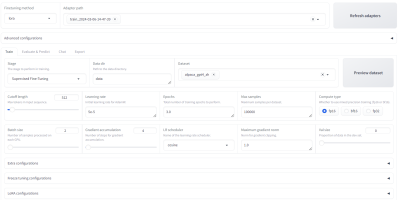This document will introduce how to setup a centos PXE boot environment on ubuntu 18.04 for install centos8 to your ARM64 machine.
In this document, it uses CentOS 8 version is 8.1.1911, it might also work on later version if you change file name accordingly .
all command in this document we assume you already run with root permission.
Hardware topology
[ARM64 CLIENT] <——-> [Server] <——-> Internet
SERVER ethernet ip is 10.0.0.1 , another interface connect to internet.
Install necessary packages
Install TFTP, HTTP and DHCPD Server and rpm2cpio
$ apt install tftpd-hpa apache2 isc-dhcp-server rpm2cpio
Modify dhcpd server configuration
$ vim /etc/dhcp/dhcpd.conf
following is example configuration,it can be changed to fit your environment
authoritative;
default-lease-time 259200;
max-lease-time 518400;
option routers 10.0.0.1;
option subnet-mask 255.255.255.0;
option domain-name-servers 168.95.1.1,8.8.8.8;
ddns-update-style interim;
ignore client-updates;
allow booting;
allow bootp;
allow unknown-clients;
server-name pxis;
subnet 10.0.0.0 netmask 255.255.255.0 {
range 10.0.0.100 10.0.0.200;
option ip-forwarding off;
option subnet-mask 255.255.255.0;
next-server 10.0.0.1;
filename "shim.efi";
}
Modify tftpd setting
$ vim /etc/default/tftpd-hpa
Add –create to TFTP_OPTIONS and change tftp directory to /tftpboot
following is example configuration file
TFTP_USERNAME="tftp"
TFTP_DIRECTORY="/tftpboot"
TFTP_ADDRESS=":69"
TFTP_OPTIONS="--secure --create"
Restart Service
mkdir /tftpboot /etc/init.d/tftpd-hpa restart /etc/init.d/apache2 restart /etc/init.d/isc-dhcp-server restart
Get ARM64 pxeboot file
some times the shim and grub2-efi would be erase, just visit mirror.centos.org and find new one than download it.
cd /tftpboot wget http://mirror.centos.org/centos/8-stream/BaseOS/aarch64/os/Packages/shim-aa64-15-15.el8_2.aarch64.rpm wget http://mirror.centos.org/centos/8-stream/BaseOS/aarch64/os/Packages/grub2-efi-aa64-2.02-106.el8.aarch64.rpm rpm2cpio shim-aa64-15-15.el8_2.aarch64.rpm | cpio -dimv rpm2cpio grub2-efi-aa64-2.02-106.el8.aarch64.rpm | cpio -dimv cp ./boot/efi/EFI/centos/shim.efi . cp ./boot/efi/EFI/centos/grubaa64.efi . chmod +rx *.efi
Configure grub.conf
$ vim /tftpboot/grub.cfg
Following is grub.conf example
set timeout=60
menuentry 'CentOS' {
linux images/pxeboot/vmlinuz ip=dhcp inst.repo=http://10.0.0.1/centos8/
initrd images/pxeboot/initrd.img
}
If your system support secure boot and you want to do it, please replace linux with linuxefi and replace initrd with initrdefi.
Get CentOS 8 stream image and copy it to web server
cd /var/www/html wget http://ftp.twaren.net/Linux/CentOS/8-stream/isos/x86_64/CentOS-Stream-8-x86_64-20220215-dvd1.iso mkdir disk mount -o loop CentOS-Stream-8-x86_64-20220215-dvd1.iso disk cp -a disk centos8 umount disk rmdir disk # copy boot file into tftp directory
cd /tftpboot
cp /var/www/html/centos8/images/ . -a
After copy all file into http file directory, it can visit via browser on server with URL http://10.0.0.1/centos8/ to check whether file exist or not.
NAT
Server should support NAT function to forward packet.
assume interface connect to internet is wls3
Following is a sample command to enable Linux NAT function which can make client to access internet or intranet .
$ echo 1 > /proc/sys/net/ipv4/ip_forward ==> enable it immediately
$ iptables -t nat -A POSTROUTING -o wls3 -j MASQUERADE
Now, you can choose pxeboot on your ARM64 machine. if everything successful, you can see CentOS on your console if everything is ok .
Known Issue
Stdin: Invalid argument
My system cannot boot into the Ubuntu install program for an unknown reason. After checking the system, it seems that the issue may be caused by an inability to access internet resources for some reason, even though the DNS and network appear to be fine. An alternative solution is to put the ISO on a website and assign the argument to the parameter. Here is an example using Ubuntu 22.04.
menuentry 'Ubuntu22.04 Net Install' {
linux ubuntu2204/vmlinuz ip=dhcp url=http://10.0.0.1/ubuntu-22.04.1-live-server-arm64.iso only-ubiquity
initrd ubuntu2204/initrd
}
Debug
Wireshark is your good friend, use it.
Ubuntu PXE Environment
It can download Ubuntu Netboot images from this url.
http://cdimage.ubuntu.com/netboot/
Choice what you want, for example, url below is Ubuntu 18.04 for ARM64 image
http://ports.ubuntu.com/ubuntu-ports/dists/bionic-updates/main/installer-arm64/current/images/netboot/
Ubuntu 20.04 Netboot file
http://ports.ubuntu.com/ubuntu-ports/dists/focal-updates/main/installer-arm64/current/legacy-images/netboot/netboot.tar.gz
Download netboot image to tftp directory, I prefer to put different version to different directory.
$ cd /tftpboot
$ wget http://ports.ubuntu.com/ubuntu-ports/dists/bionic-updates/main/installer-arm64/current/images/netboot/netboot.tar.gz
$ mkdir ubuntu1804
$ cd ubuntu1804
$ tar xvf ../netboot.tar.gzModify grub.cfg and add Ubuntu option to grub.cfg, save it, now, this server can also provide ubuntu net install
set timeout=60
menuentry 'CentOS8 Install' {
linux images/pxeboot/vmlinuz ip=dhcp inst.repo=http://10.0.0.1/centos8/
initrd images/pxeboot/initrd.img
}
menuentry 'Ubuntu18.04 Install' {
linux ubuntu1804/ubuntu-installer/arm64/linux ip=dhcp
initrd ubuntu1804/ubuntu-installer/arm64/initrd.gz
}
Ubuntu ISO environment
It can download iso file and use the iso file as install media.
in Linux, download Ubuntu 20.04 ARM64 iso file
$ wget https://cdimage.ubuntu.com/releases/20.04/release/ubuntu-20.04.3-live-server-arm64.iso $ mount -o loop ubuntu-20.04.3-live-server-arm64.iso disk $ mkdir ubuntu2004 $ cp disk/casper ubuntu2004/ -a $ umount disk
Modify grub.cfg as below (not test)
set timeout=60
menuentry 'CentOS8 Install' {
linux images/pxeboot/vmlinuz ip=dhcp inst.repo=http://10.0.0.1/centos8/
initrd images/pxeboot/initrd.img
}
menuentry 'Ubuntu20.04 Install' {
linux ubuntu2004/casper/vmlinuz ip=dhcp
initrd ubuntu2004/casper/initrd
}
It also can use HWE kernel
menuentry 'Ubuntu20.04 Install' {
linux ubuntu2004/casper/hwe-vmlinux ip=dhcp
initrd ubuntu2004/casper/hwe-initrd
}
Note for GRUB Install Command
CentOS
svr=10.0.0.1; root=boot/centos8/images/pxeboot linux (http,$svr)/$root/vmlinuz inst.stage2=http://$svr/boot/centos8 text initrd (http,$svr)/$root/initrd.img
Ubuntu
svr=192.168.110.254; root=boot/ubuntu2004/casper iso=ubuntu-20.04.3-live-server-arm64.iso linux (http,$svr)/$root/vmlinuz url=http://192.168.110.254/boot/$iso only-ubiquity ip=dhcp --- initrd (http,$svr)/$root/initrd linux (http,$svr)/$root/hwe-vmlinuz url=http://192.168.110.254/boot/$iso only-ubiquity ip=dhcp --- initrd (http,$svr)/$root/hwe-initrd
Fedora 36
Fedora’s setting is more closed to CentOS, due to CentOS might be dropped recently, so, moved to Fedora environment is necessary.
Get initrd/vmlinux image
Other parts like CentOS,
Download the PXE initrd and vmlinuz image, free.nchc.org.tw is Taiwan local Fedora server, you can replace it with local server.
mkdir -p /tftpboot/f36 cd /tftpboot/f36 wget http://free.nchc.org.tw/fedora/linux/releases/36/Server/aarch64/os/images/pxeboot/initrd.img wget http://free.nchc.org.tw/fedora/linux/releases/36/Server/aarch64/os/images/pxeboot/vmlinuz cd /var/www/html wget http://free.nchc.org.tw/fedora/linux/releases/36/Server/aarch64/iso/Fedora-Server-dvd-aarch64-36-1.5.iso mkdir disk mount -o loop Fedora-Server-dvd-aarch64-36-1.5.iso disk cp -a disk f36 umount disk
Grub Fedora Setting
Add following grub entry text into /tftpboot/grub.cfg, thus, it can insert a “Fedora36” menu on pxe boot.
menuentry 'Fedora36' {
linux f36/vmlinuz ip=dhcp inst.repo=http://10.0.0.1/f36/
initrd f36/initrd.img
}
Ref.
https://docs.centos.org/en-US/centos/install-guide/pxe-server/#sect-network-boot-setup-uefi
https://docs.centos.org/en-US/8-docs/advanced-install/assembly_preparing-for-a-network-install/
https://forums.opensuse.org/showthread.php/501075-error-cannot-find-commands-linuxefi-or-initrdefi





發佈留言